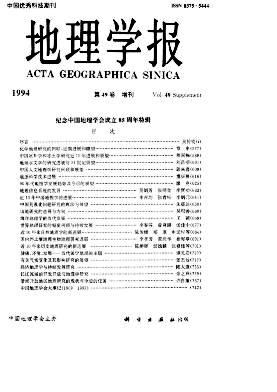Zhu Zhenda
Desertification is an important envirenmental problem in the world today. According to China’ situation , desertification is land degradation , which means reduction and loss of the biological or economic productivity and complexity of rainfed croplandirrigated cropland, pasture and woodlands by one process or a combination of processes and land use system, including those arising from human activities, such as 1. Wind and Water erosion 2. Deterioration of soil physical, chemical and biological propertics.From this viewpoint, the advance of desertification research can be summarized into three areas.1. Desertification and environmental changes during the historical times. The relics of sand-burried ancient towns and the occurrence of the landscape of undulation sand dunes on the former famous pastures in Northern China are the evidence of the desertification in historical time. It is practical and significant to study the characteristics of the generation and development of the desertification process in history, and to assimilate the lessons from the failure.It is acceptable and valuable to the development and utilization of resources in arid and semiarid zones with a fragile ecosystem.2. The formation, development trend and combatting sandy desertification in Northern China. In Northern China, the area of land desertification is 33 400km2, of which 27% of desertified land is distributed in the east part of inner Mongolia and north part of Hebei Province, and manifested by its quick growth at the marginal of dry farming and steppe and by the harms of sand sheets around dry farming system. 44% of the total desertified land is distributed in the central part of Inner Mongolia and north part of Shaaxi and Shanxi Province,and manifested by rangeland desertification and its acceleration of the spread of desertification at the marginal area. 27% of the total desertified land is distributed in the west part of Inner Mongolia, Gansu, Qinghai and Xinjang, and characterised by dune encroachment at oasis periphery and by the harms caused from reactivation of semi-fixed and fixed dunes.It is observed that 25. 4% of total desertified land is caused by over-cultivation, 28. 3% of total desertified land is caused by over-grazing, 31. 8% of total desertified land is caused by undue collection of fuelwood, only 5. 5% of total desertified land is caused by dune invasion ,and the rest is caused by misuse of water resources and by destruction of vegatation.In consideration of the intenstity of desertification, it can be devided into four catigories:the very severe desertified land covers 10. 2%, the severe desentified land cover 18. 3 %, the moderate cover 30. 5%, the slighly and latently desertified land covers 41. 0% .From the and of 1950’s to the middle of 1970’s, the desertified land had expanded 1 560km2 per year on average, and during the last decade, it has gone up to 2 100km2 per year on average.3. Desertification caused by water erosion. This topic has drawn more and more attention today. Due to human activities such as cultivation on steep slopes, deforestation and so on, desertification caused by water erosion is mainly distributed in such wathering crust area as Gramite, Quaternary red clay, limestone and sandstone. In recent decedes, the area of desertification has inereased. For example, the area prone to desertification increased from 12. 9%of the total territorial area of Jiangxi province in 1970’s to 26. 7% of the total territorial area in 1980’s.
